In the Supercoppa Italiana final, Juventus won their first trophy of the season with a victory over AC Milan. In a tight match, Juventus beat Milan due to their superior individual quality as well as various tactical nuances.
Why Juve’s victory was a deserved one and how the offside trap played an important role will be outlined in the following tactical analysis. Moreover, the analysis will give an insight into the possession phase of Juventus under Massimiliano Allegri.
Line-ups and formations
Juventus Turin deployed a 4-3-3 system. Allegri had to replace the injured striker Mario Mandžukić in attack. As a consequence, Paulo Dybala took over the position of the central forward. Douglas Costa was lined up next to him as the right winger.
Gennaro Gattuso stuck to the 4-3-3 formation Milan have deployed in recent matches. Striker Patrick Cutrone was put into the starting line-up, but former River Plate player Gonzalo Higuaín was not in the first XI. Right-back Davide Calabria started again and replaced Ignazio Abate.
The fluidity of Juventus
Although nominally a 4-3-3 formation, the spacing of Juventus did not display a 4-3-3. Due to the movements of left winger Christiano Ronaldo, their shape resembled an asymmetrical 4-4-2 at times.
Ronaldo often tucked inside to get closer to Milan’s goal while the left central midfielder Blaise Matuidi attacked on the left side. Matuidi and Ronaldo complemented each other very well. Whereas the French midfielder made use of his distribution and defensive qualities, Ronaldo had enough cover to constantly contribute to the attack high up the pitch.

While left-back Alex Sandro provided full width and was tasked with crossing whenever Ronaldo entered the penalty area, right-back João Cancelo attacked through the half-space. This distribution of roles was a reasonable one as the right side of Juve’s attacking department always had at least one player providing width.
Miralem Pjanić played a pivotal role during the attacking phase of the Serie A record champions. The Bosnian kept his position as a holding midfielder and distributed the ball into deeper areas.
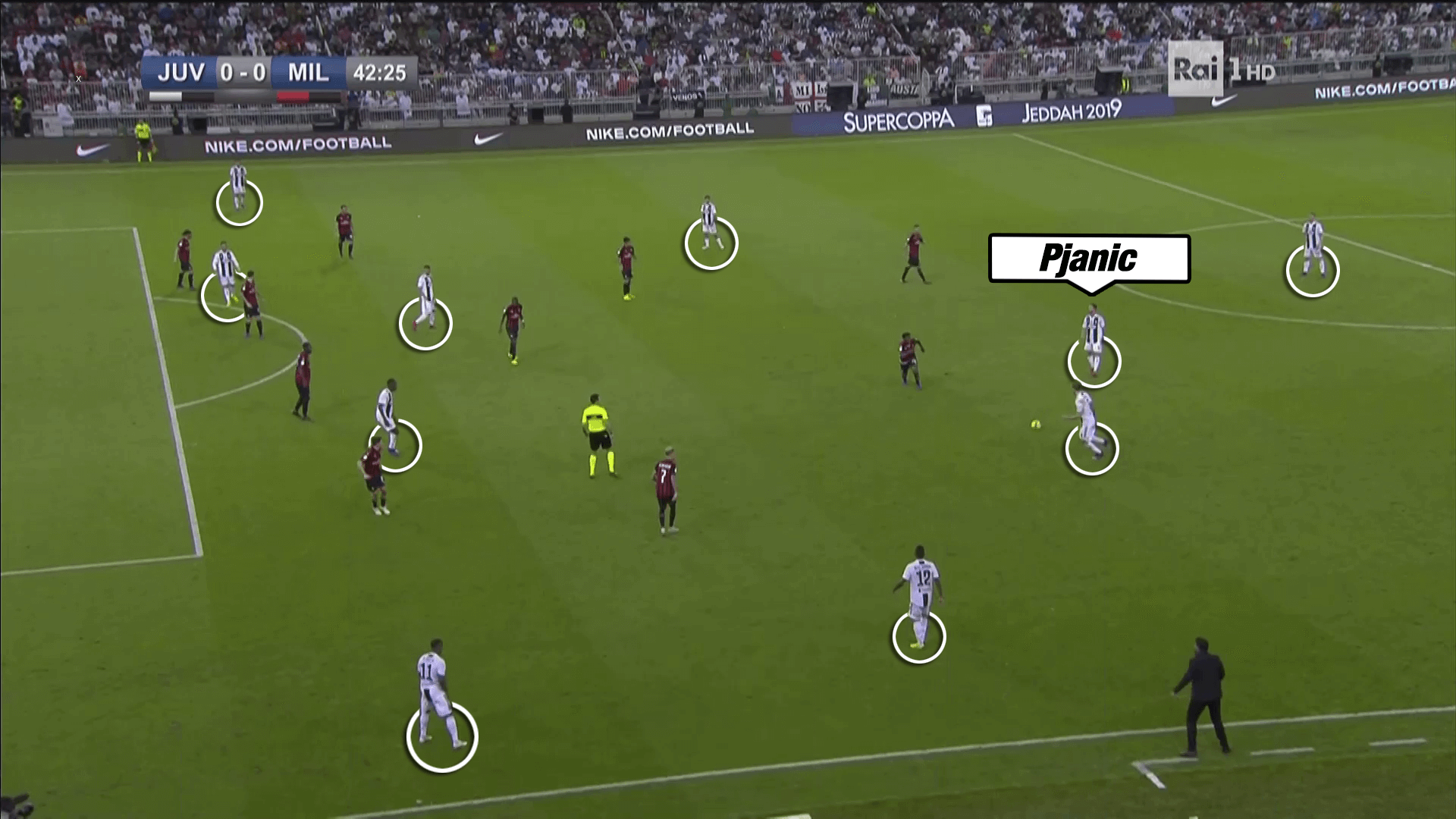
To cover the attack and prevent any counter-attacks, Allegri tasked two further players to play alongside Pjanić in possession. One of them was captain Giorgio Chiellini. The centre-back moved up in possession to create a further passing option. Either Bentancur or Dybala positioned themselves on the right side of Pjanić. That left Leonardo Bonucci at the back with the task of stopping Milan striker Cutrone from counter-attacking.
Milan’s low block
Gattuso’s side used a low block to defend. Both wingers fell back into a midfield line of five forming a 4-5-1 shape out of possession.
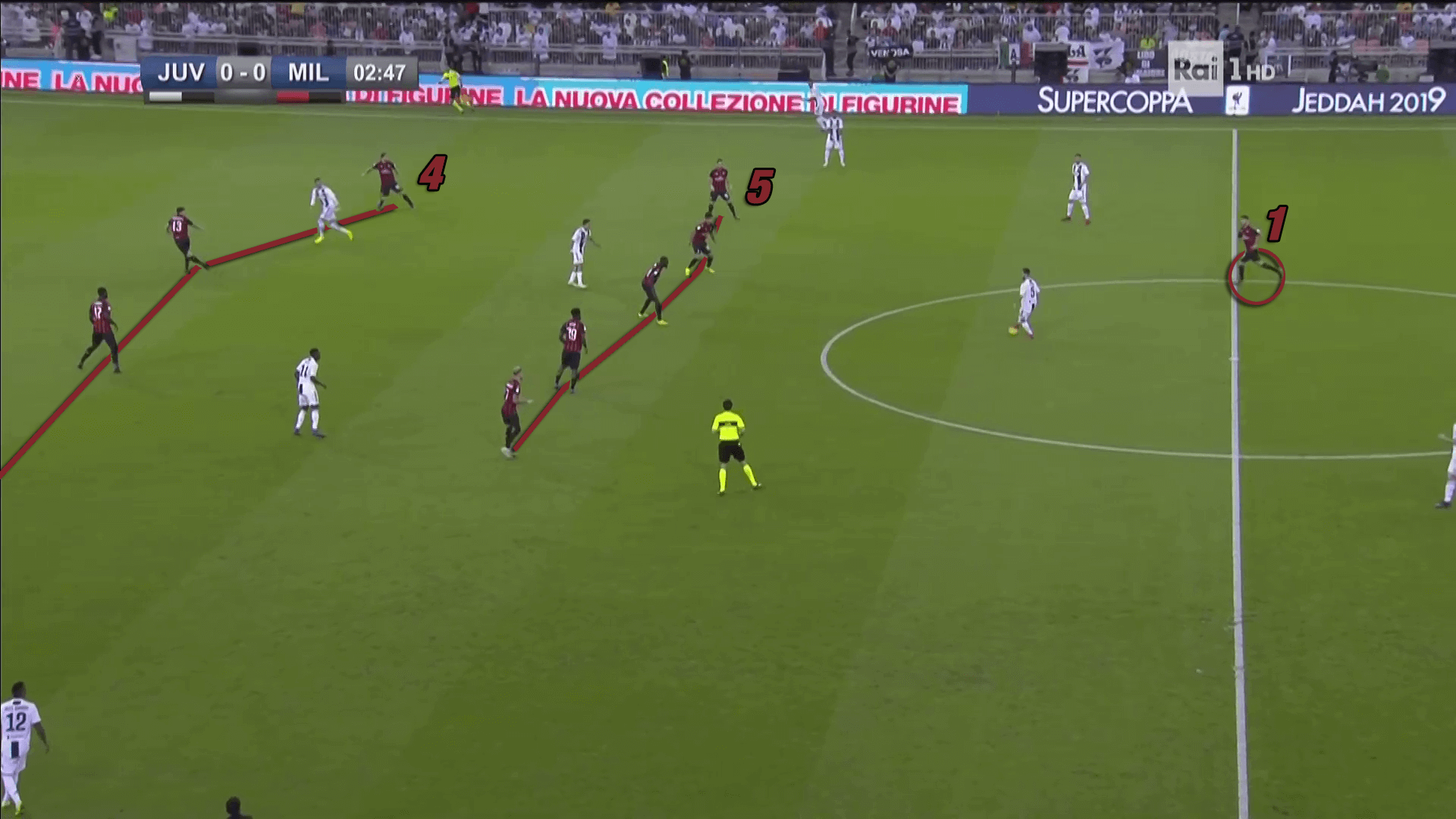
Due to good backward movement in midfield, the central midfielders Tiemoué Bakayoko, Franck Kessié and Lucas Paquetá maintained their connection with the back four. This vertical compactness prevented Juventus from playing through passes to get behind the last line. Any Juventus player receiving the ball between the lines was immediately pressed. That often resulted in inaccurate passes and even losses of the ball.
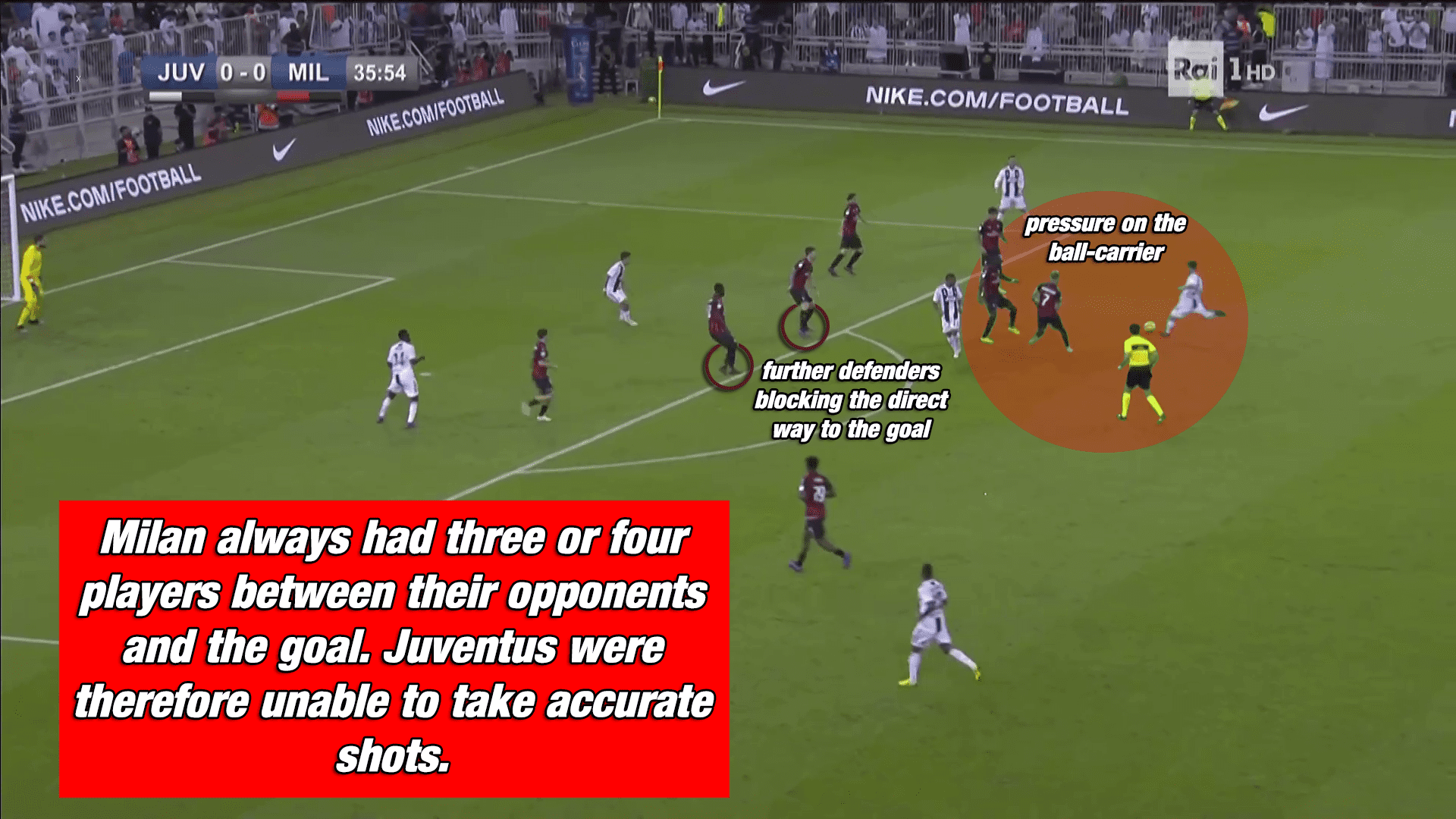
Another reason why Juventus barely threatened Milan’s goal was that Milan’s defenders always applied pressure on the ball-carrier in dangerous positions. In addition to that, further defenders of Gattuso’s side blocked the direct path to the goal. Therefore, shots from distance were very unpromising.
Cristiano Ronaldo as the only target player for crosses
Dybala, normally playing as a right winger, interpreted his new striker position differently to how Mandžukić usually fulfils this role. Instead of providing depth all the time, the Argentine often dropped back into midfield or drifted towards the right wing. Since central midfielder Rodrigo Bentancur and right winger Douglas Costa occupied the space Dybala left, Juventus had a good balance within their possession phase.
However, with Dybala and Costa both playing in attack, Juventus lacked players with heading ability. The aim of Juve’s combinations within the attacking third was to get wide players in positions to supply dangerous crosses. Despite the fact that Ronaldo scored the deciding goal with a header in the penalty area, it was clear that Juventus missed the threat of Mandžukić up front. On many occasions, Ronaldo was the only player in the area who was capable of threatening the opposition goal from crosses.
Milan’s struggles in possession
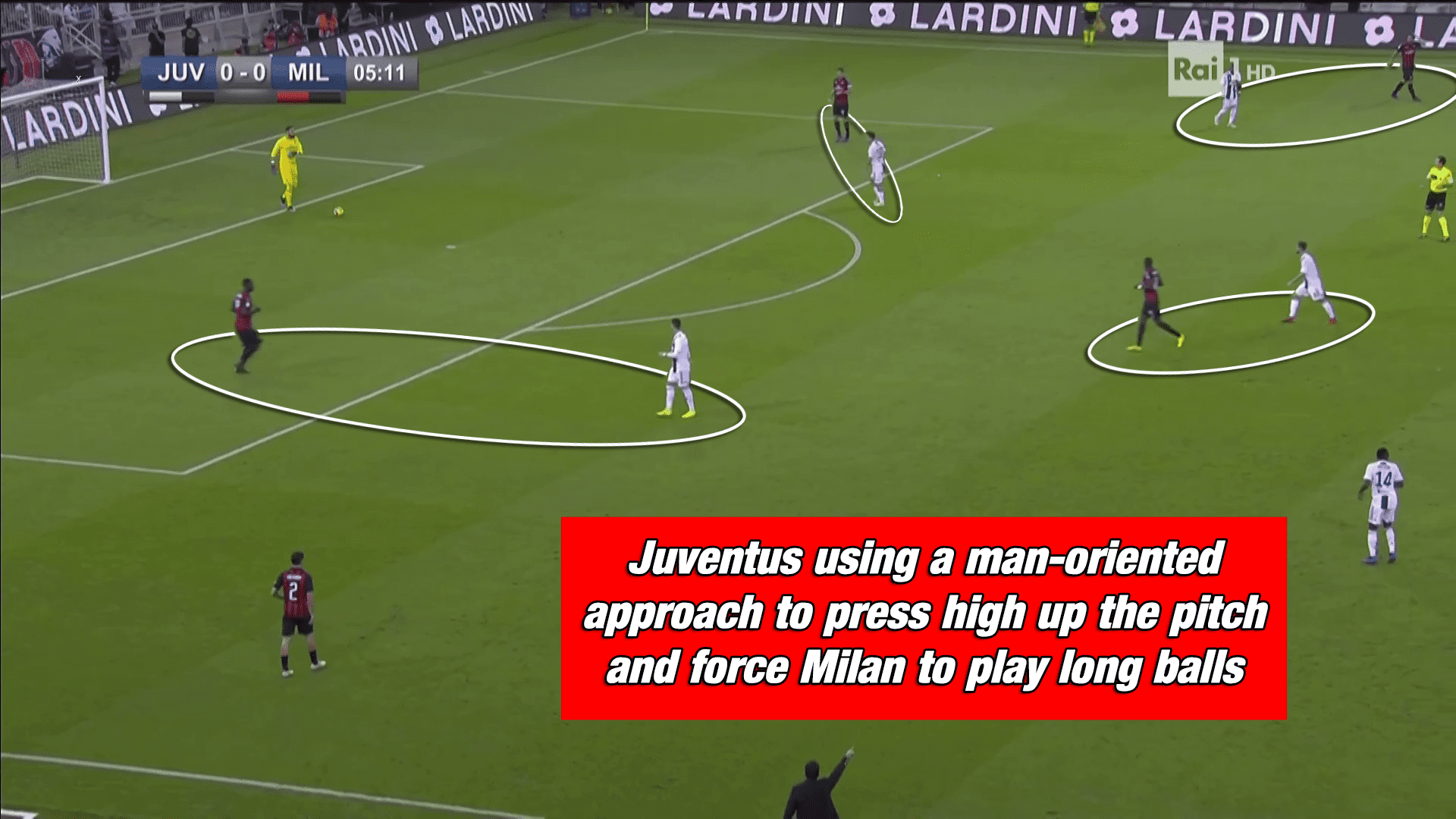
The defensive approach of Allegri’s team was a more active one than the low-block defence of Milan. Juventus attempted to press the opposition high up the pitch to regain possession as early as possible. Mostly this concept worked out, since Milan’s full-backs played imprecise long balls. Nevertheless, Milan occasionally carved out promising opportunities after winning the second ball due to bad clearances by Juventus defenders, as in the situation below.
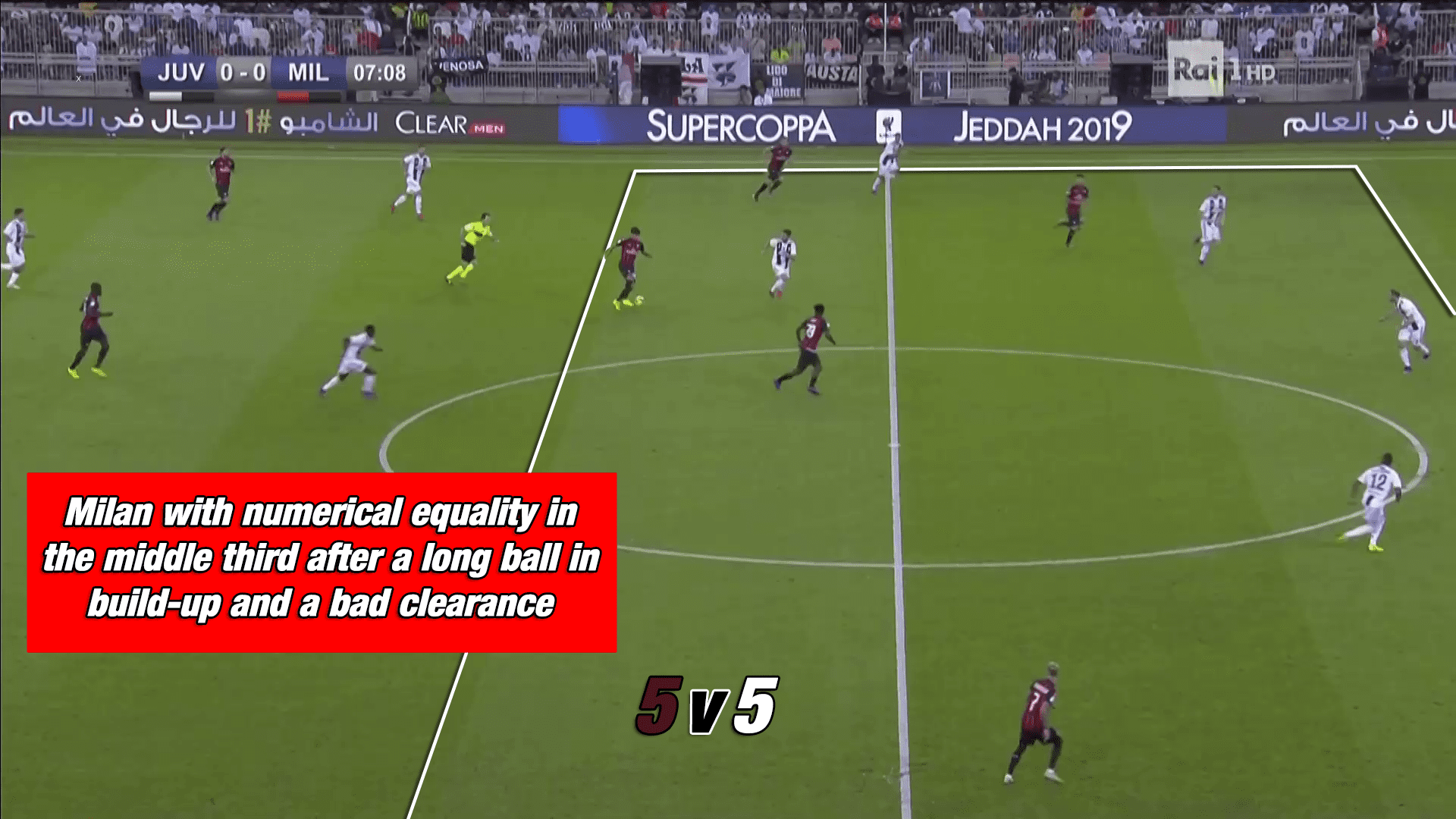
As the match wore on, the press of Juve was not aggressive enough. They increasingly allowed the ball-carrier to look for passing options, resulting in successful progressions up the pitch. In these situations, Juve focused on defending the centre of the pitch and forcing Milan to play out wide. The three central midfielders in Matuidi, Bentancur and Pjanić closed down the passing options in front of their back four. Therefore, Milan often had to attack through the wings.
However, this was not the most promising approach for two reasons. Firstly, Juve’s central defenders Leonardo Bonucci and Giorgio Chiellini are possibly the world’s best defenders when it comes to defending crosses. Secondly, Hakan Çalhanoğlu and Samu Castillejo, both lined up as wingers, prefer to tuck inside instead of staying on the flanks. As the possession phases of Milan were often not long enough, the full-backs were not able to progress up the pitch to take crosses from wide areas. Therefore, Milan lacked penetrating power up front and relied on defensive mistakes from Juventus.
The offside trap decides the game
Within their own half, both teams made use of the offside trap. However, the execution of both sides was completely different. Juventus successfully applied this concept about 35 yards away from their goal. In contrast to that, Milan used the offside trap in their own penalty area. With this strategy, Milan tried to prevent Ronaldo from finishing within the box. However, exactly the opposite happened.
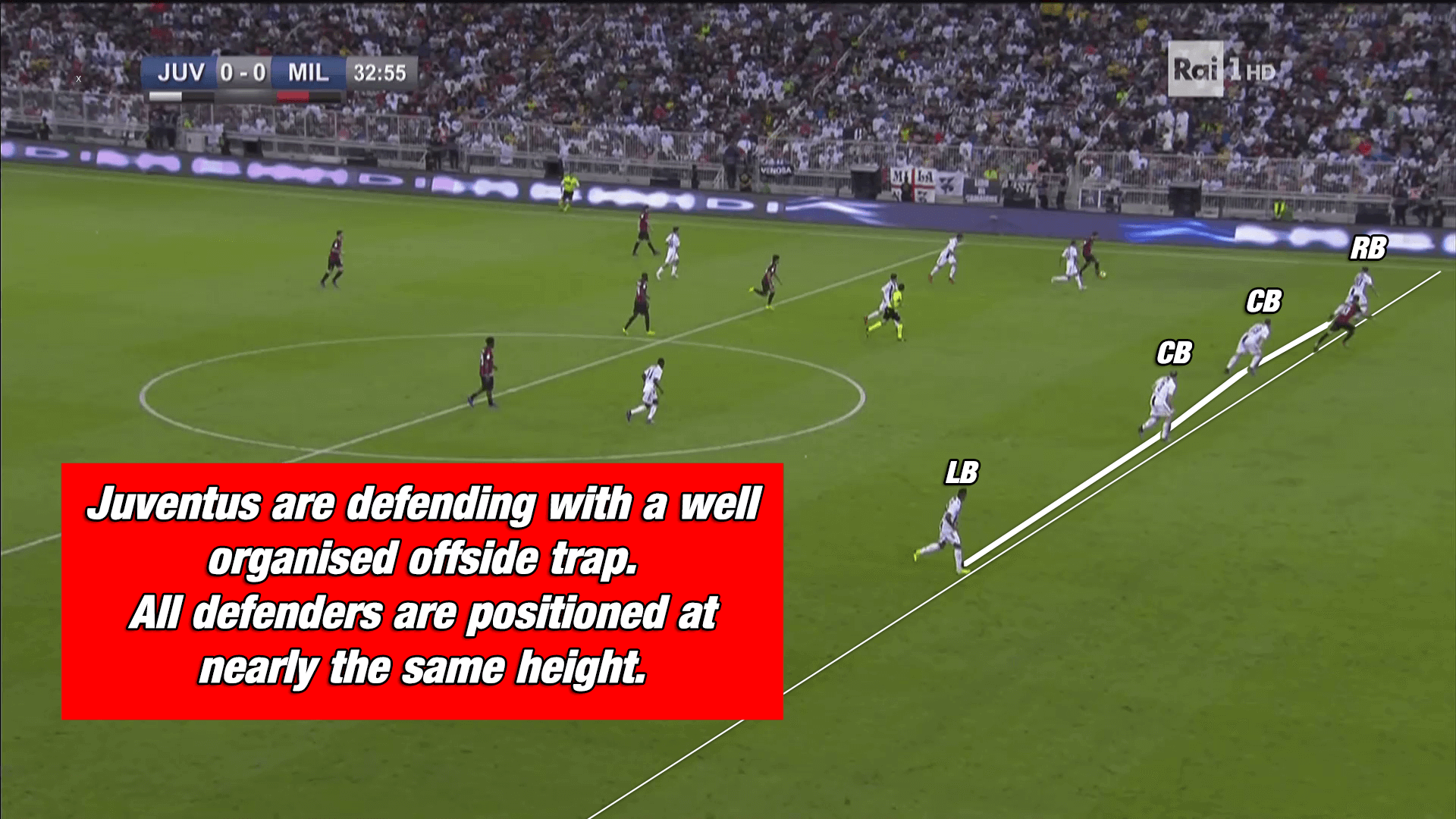
First things first, the central defence of Allegri’s side was able to stop a dangerous counter-attack of Milan during the first half. The whole back four gave a perfect example of how to position an opposition striker offside. Central defenders Bonucci and Chiellini moved up the pitch when the opposition ball-carrier was not able to play a pass since he had just taken a touch and his feet were not close to the ball. As Juve’s full-backs positioned themselves at the same height as the centre-backs, Milan’s attacker was in an offside position.
In contrast, Milan’s offside trap seemed amateur. The central defenders admittedly moved up at the same time, but the full-backs failed to hold a higher position than their central defenders.
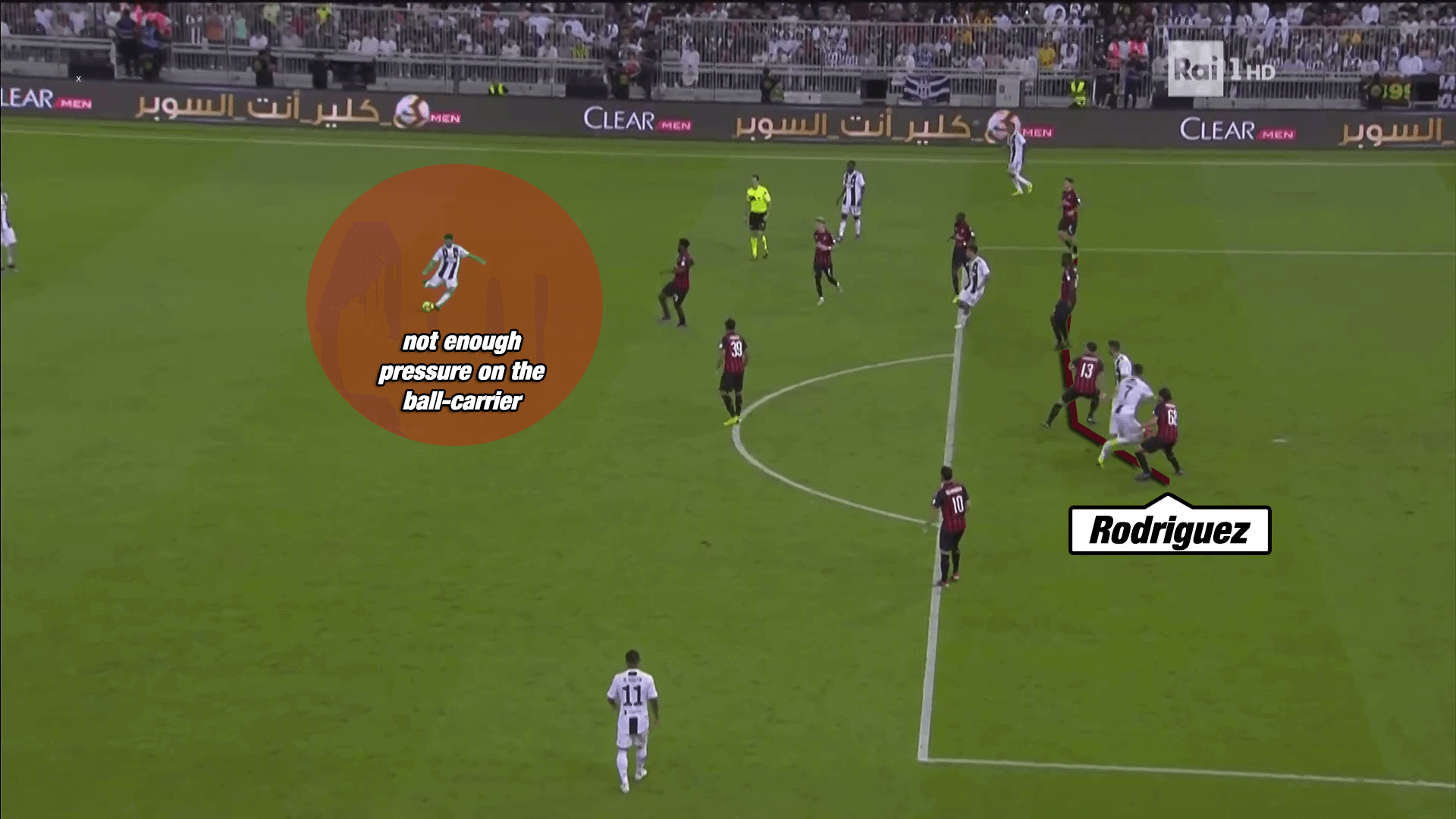
Therefore, Cristiano Ronaldo scored the only goal of the match from an onside position.
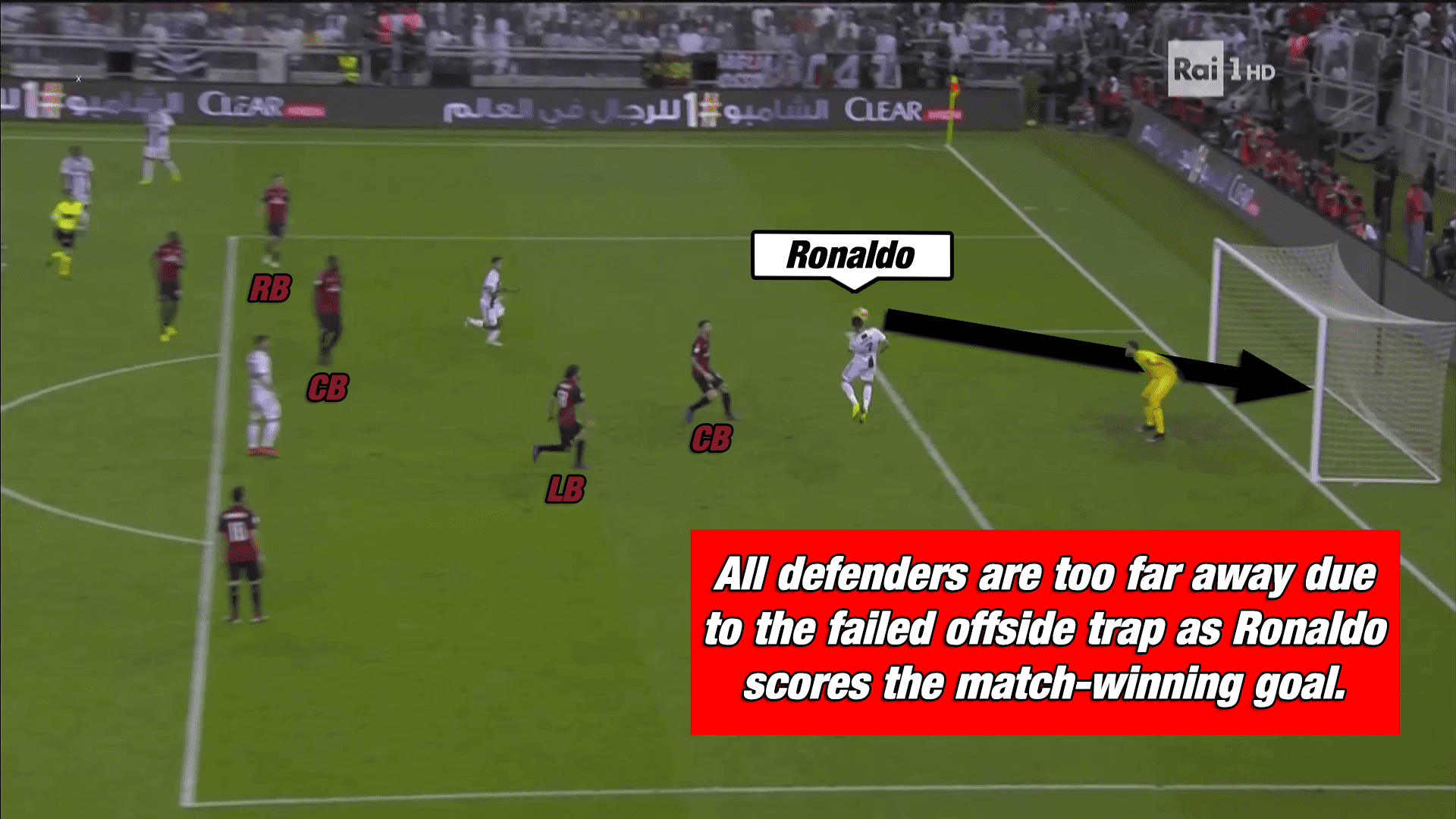
Furthermore, Juve scored two more goals. Although these goals were correctly cancelled due to offside, in both situations left-back Ricardo Rodríguez was positioned deeper than all other Milan defenders. This error occurred more than once and should immediately be fixed by Gattuso and his staff.
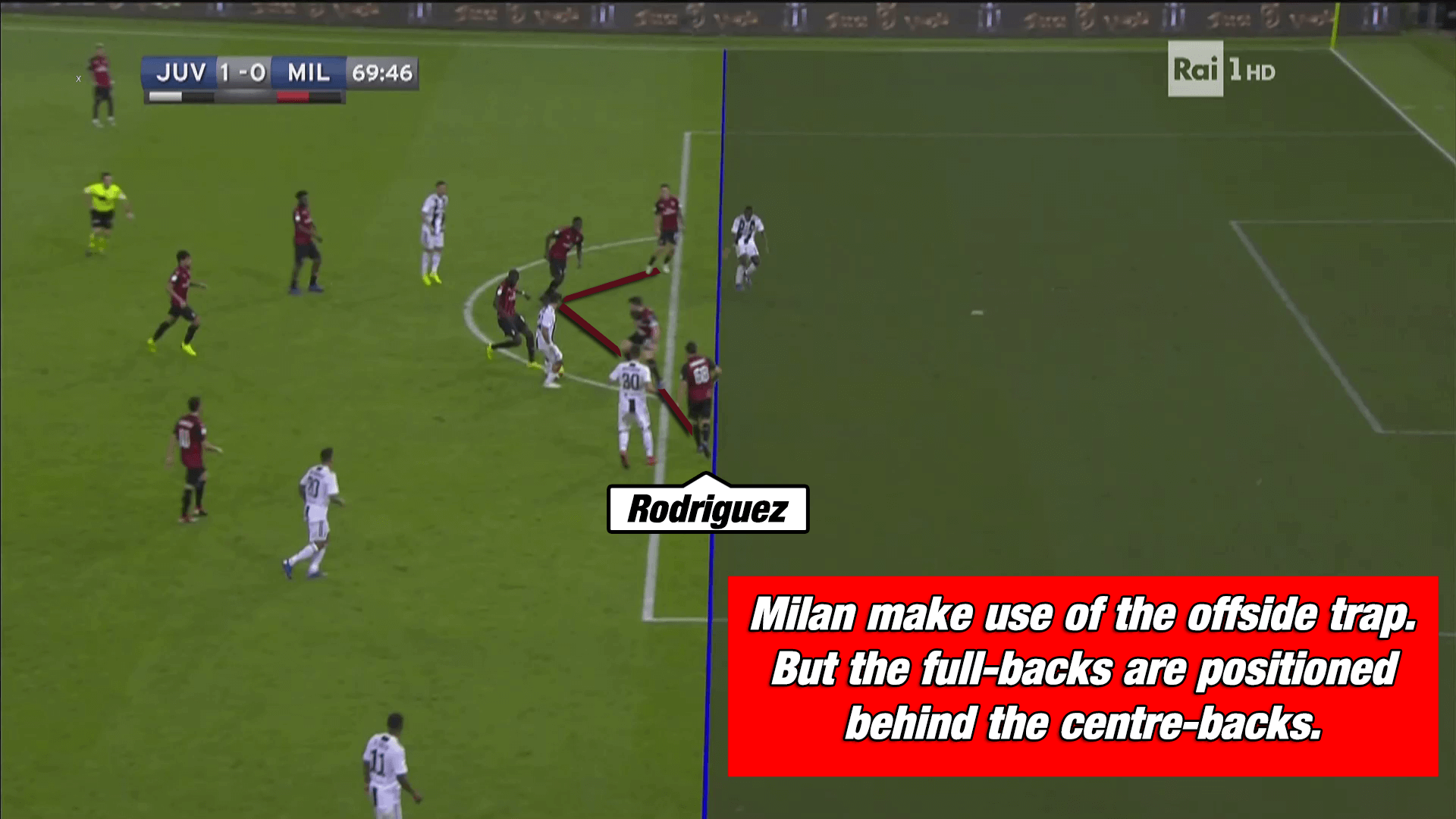
Milan’s final fight
In the final stage of the game, Milan went down to 10 men as Kessié was sent off. despite this disadvantage, they threatened Szczęsny’s goal more than before. Head coach Gattuso took the risk of defending with one man fewer and positioned two attackers up front for counter-attacks. Substitute Gonzalo Higuaín as well as Cutrone stayed high up the pitch, even during the defensive phase.
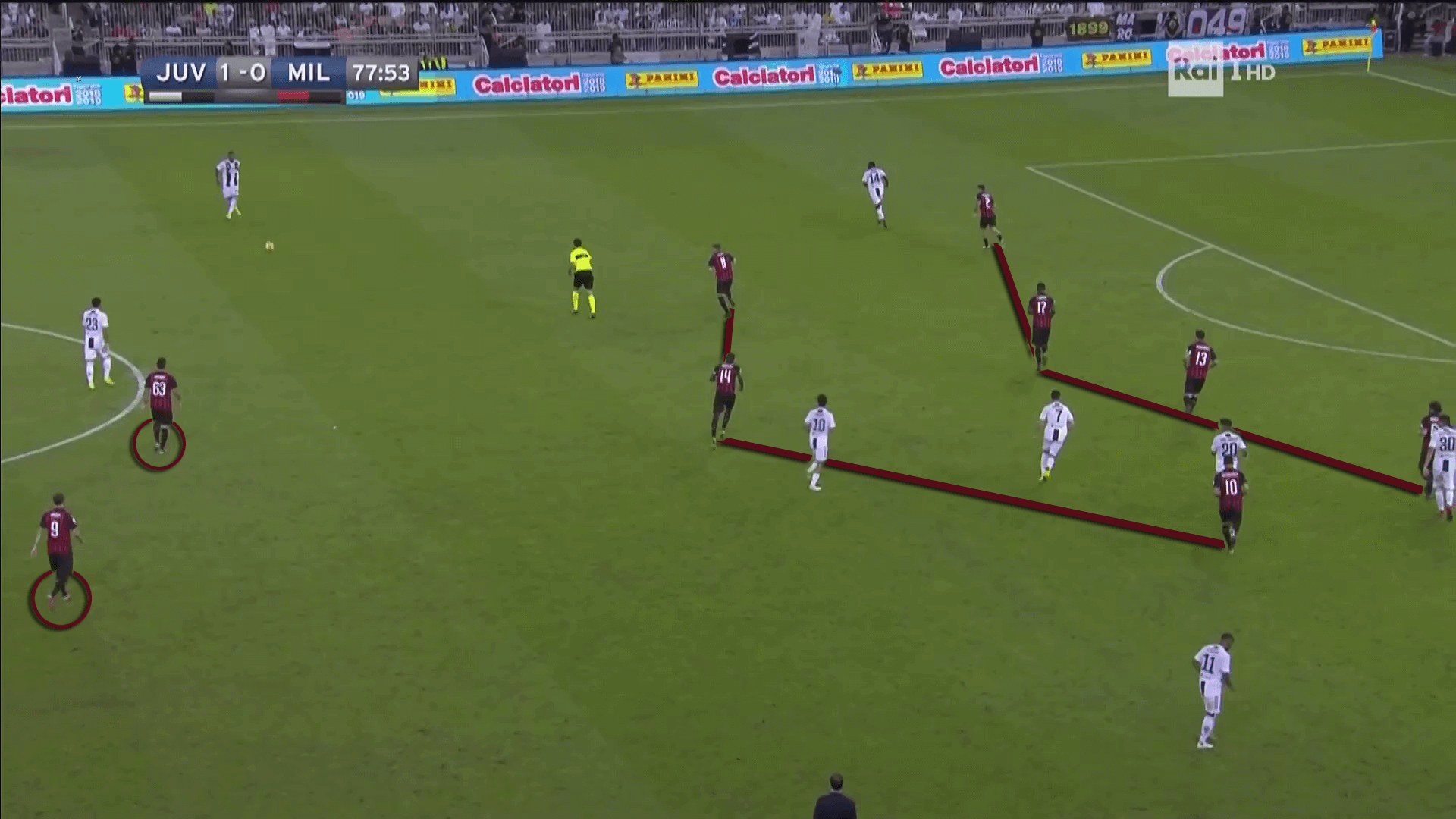
Allegri brought on Emre Can for single pivot Pjanić. Can often left his position to contribute to the attack more than the Bosnian had. This tore a hole into the central midfield of Juventus which neither Matuidi nor Bentancur could stitch. As a result, Milan got more space in the centre.
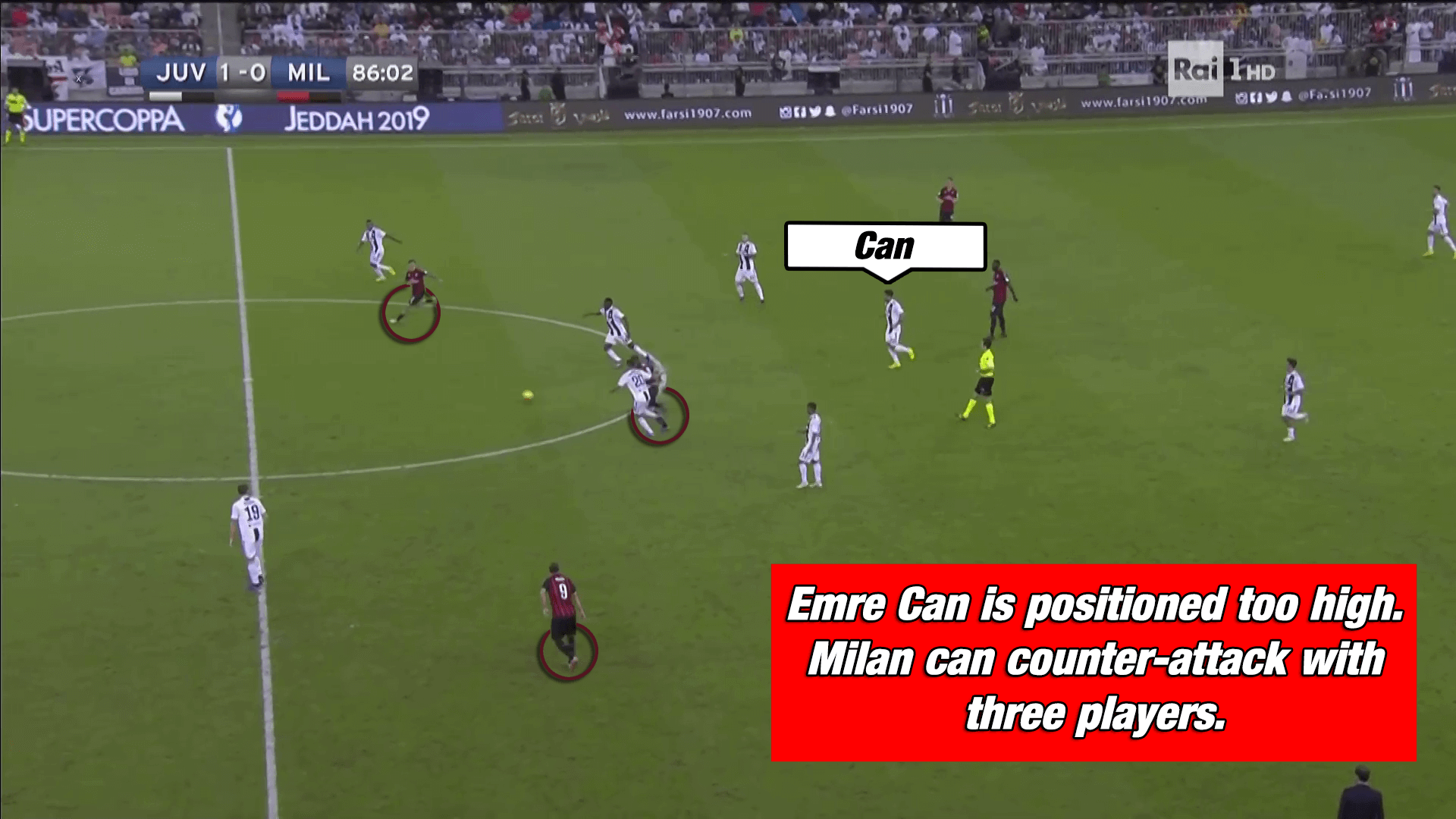
Just a few minutes before the final whistle, Juventus were lucky not to concede a penalty after Can defended a Milan attack with a risky sliding tackle. However, as the referee did not decide to give Milan a penalty, Juventus got away with their naive defensive behaviour in those closing moments.
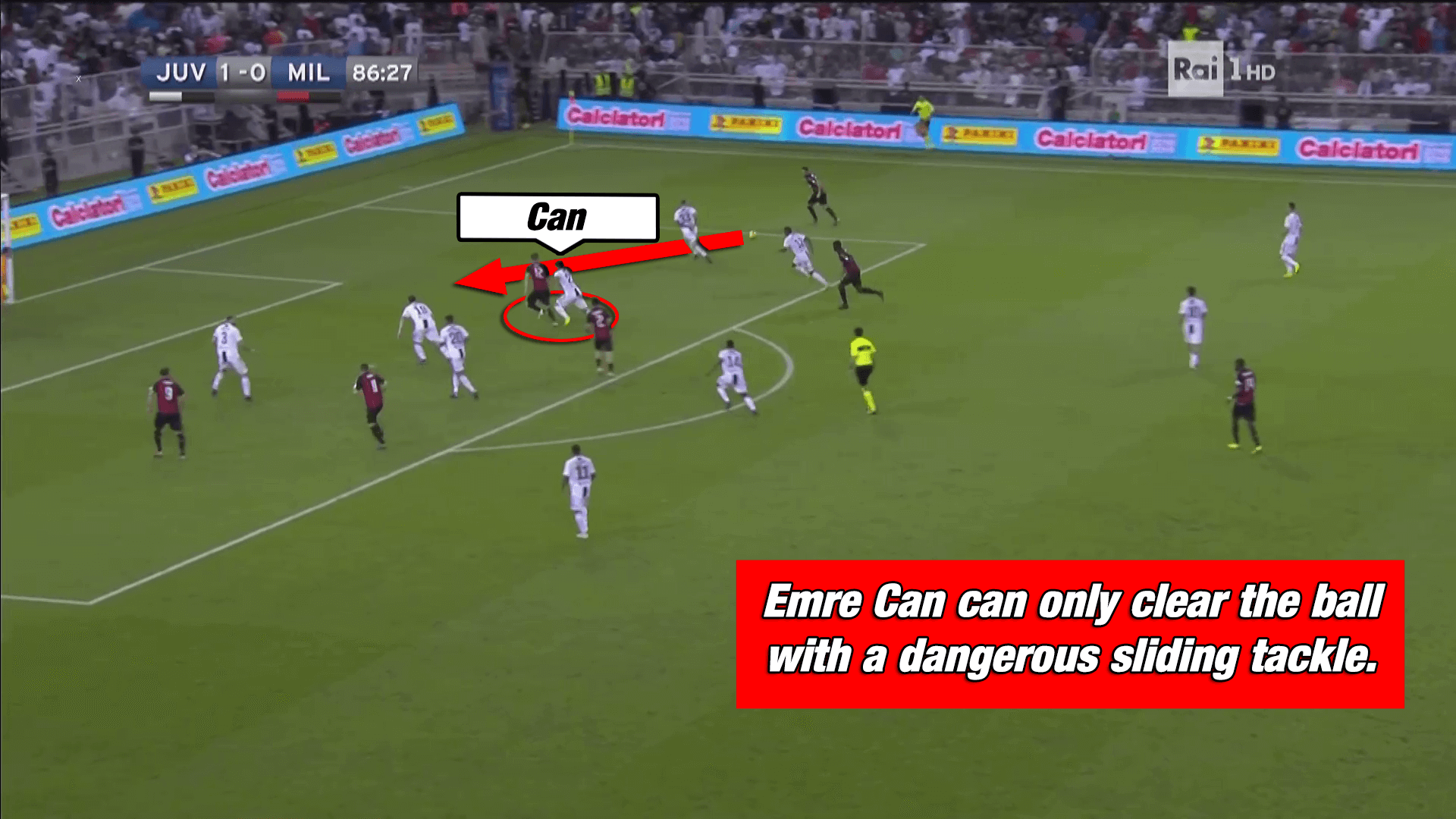
Conclusion
Although Milan held their own throughout most of the parts of the match, the disastrous execution of the offside trap might have cost them the trophy.
Juventus on the other hand are worthy winners. Although their performance had some room for improvement, Allegri’s side dominated the game in possession. Once again, Juventus demonstrated the importance of balance. The establishment of total balance in both attacking and defensive phases of the game is one of the key factors for Juve’s success. You can read a detailed analysis of Allegri’s approach in the January edition of the Total Football Analysis Magazine.
If you love tactical analysis, then you’ll love the digital magazines from totalfootballanalysis.com – a guaranteed 100+ pages of pure tactical analysis covering topics from the Premier League, Serie A, La Liga, Bundesliga and many, many more. Buy your copy of the January issue for just ₤4.99 here, or even better sign up for a ₤50 annual membership (12 monthly issues plus the annual review) right here.

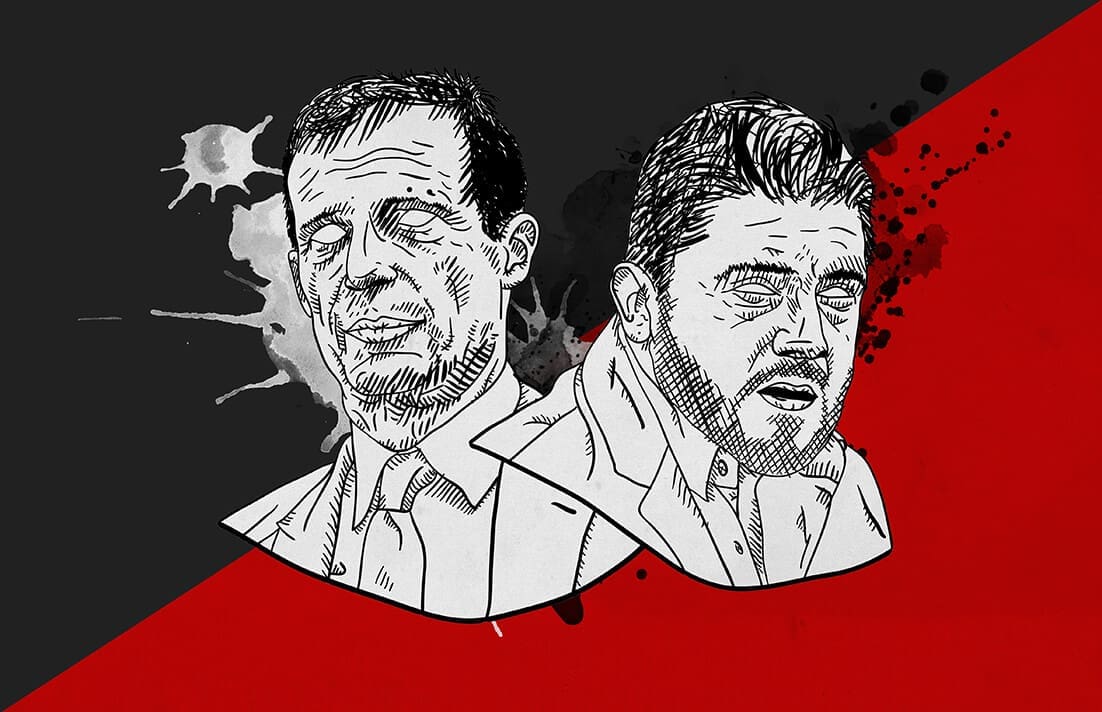



Comments